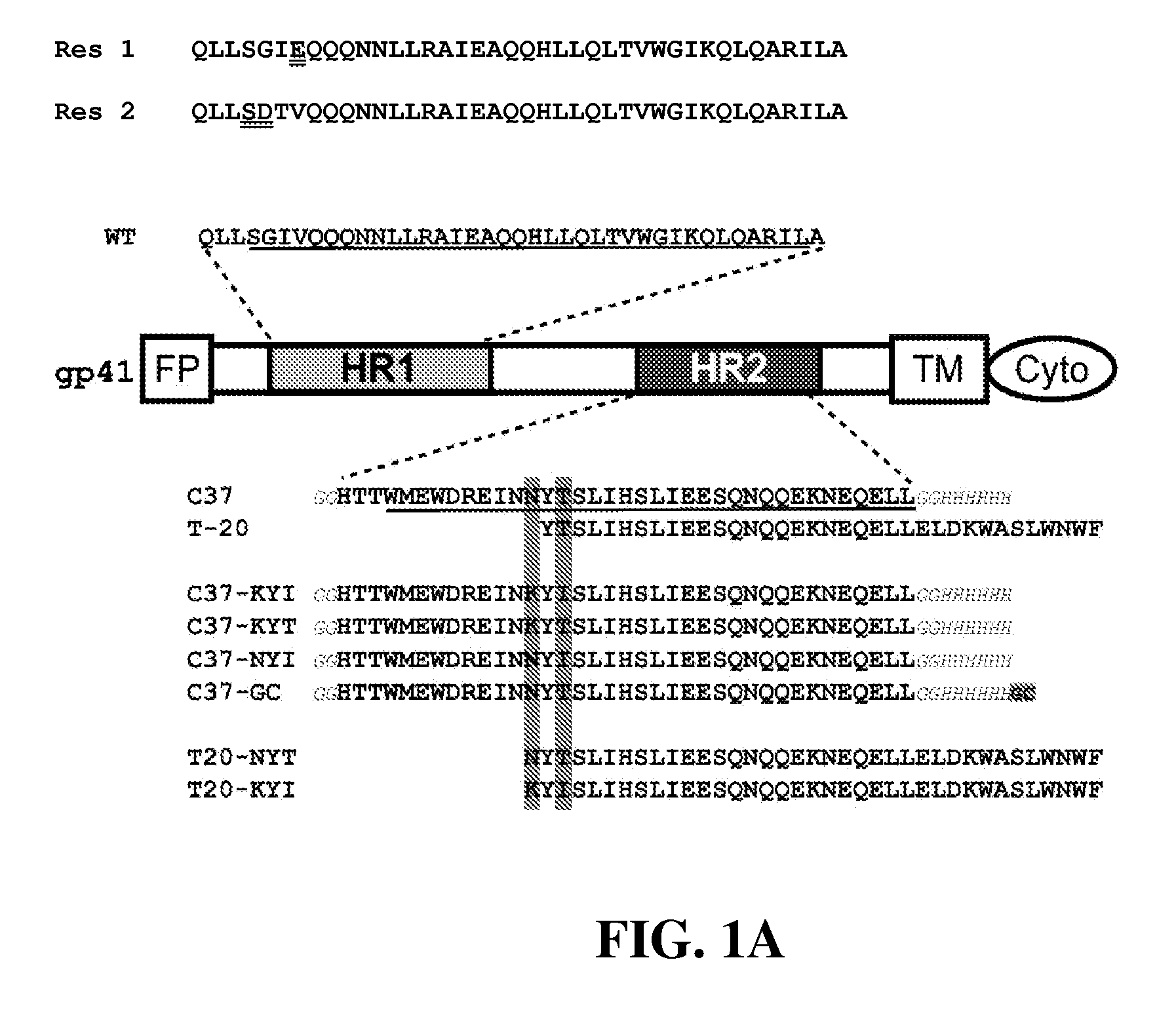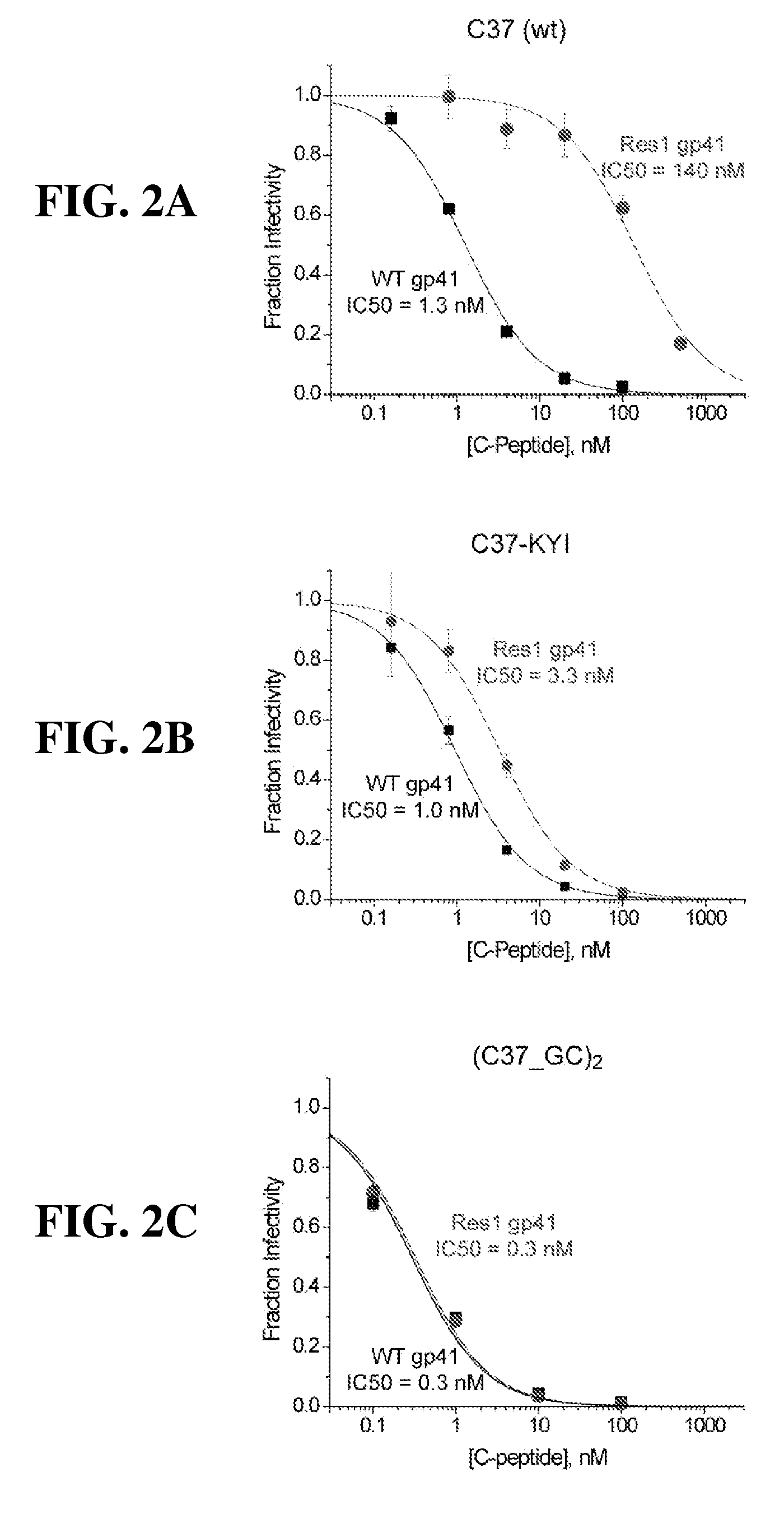Tighter-binding c-peptide inhibitors of hiv-1 entry
a c-peptide inhibitor and tighter binding technology, applied in the direction of peptide sources, extracellular fluid disorders, metabolism disorders, etc., can solve the problems of high cost of anti-hiv therapies targeting reverse transcriptase and protease enzymes, no vaccine or cure for hiv or aids, and the infection of a major global health problem. to achieve the effect of enhancing the anti-hiv potency of a given hiv c-peptide inhibitor
- Summary
- Abstract
- Description
- Claims
- Application Information
AI Technical Summary
Benefits of technology
Problems solved by technology
Method used
Image
Examples
example
Introduction
[0134]C-peptides inhibit gp41 in a kinetic window between CD4-gp120 interaction and trimer-of-hairpins formation. As a consequence, their potency is not only dependent on binding affinity, but is also influenced by kinetic parameters such as the rate of association of C-peptides with gp41 and the lifetime of the sensitive intermediate state. These kinetic parameters tend to limit T20 and C37 potency to the low nanomolar range (variable depending on viral strain and infectable target cells). Tighter binding variants of T20 and C37 tend to inhibit wild type virus with the same nanomolar potencies.
[0135]Resistance to C-peptides develops through at least two different mechanisms. The first is straightforward and much more commonly observed: resistant viruses tend to accumulate mutations in the gp41 HR1 region, especially in the sequence between amino acids 543 and 552-QLLSGIVQQQ (SEQ. ID. No. 13) in HXB2 sequence, that substantially reduce T20 and C37 binding affinity. Two c...
PUM
| Property | Measurement | Unit |
|---|---|---|
| concentration | aaaaa | aaaaa |
| pH | aaaaa | aaaaa |
| equilibrium dissociation constant | aaaaa | aaaaa |
Abstract
Description
Claims
Application Information
 Login to View More
Login to View More - R&D
- Intellectual Property
- Life Sciences
- Materials
- Tech Scout
- Unparalleled Data Quality
- Higher Quality Content
- 60% Fewer Hallucinations
Browse by: Latest US Patents, China's latest patents, Technical Efficacy Thesaurus, Application Domain, Technology Topic, Popular Technical Reports.
© 2025 PatSnap. All rights reserved.Legal|Privacy policy|Modern Slavery Act Transparency Statement|Sitemap|About US| Contact US: help@patsnap.com



